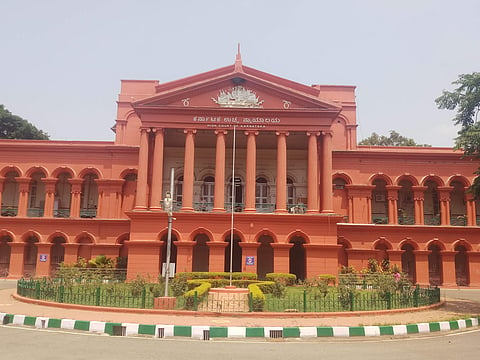

BENGALURU: The Karnataka High Court on Wednesday issued notice to the state and central government authorities on a public interest litigation filed by a youth from Hosa Kabbalu of Kanakapura taluk in Ramanagara district, seeking directions to stop running a madrasa illegally within the premises of Juma Masjid, a centrally protected ancient monument in Srirangapatna town of Mandya district.
Accusing those running the madrasa of constructing structures for washing and drying of clothes, making structural alterations and partitions, constructing toilets, installing a separate gate, cooking food, damaging the compound wall and intricate carvings in the premises, petitioner Abhishek Gowda prayed to court to direct the archaeology department to restore the monument to its original position, by removing illegal structures.
After hearing the petition, the division bench of Chief Justice Prasanna B Varale and Justice Krishna S Dixit issued notice to the Ministry of Culture, Government of India, Director General of Archaeological Survey of India, Principal Secretary, Department of Revenue, Government of Karnataka, and Mandya DC.
The petitioner, who claims to be an agriculturist and social worker, stated that in July 2023, he went on a sightseeing tour to various historical places in Mandya district, and visited Juma Masjid, and to his utter shock, noticed a residential madrasa being run within the precincts of the masjid and found 50-60 students. He also noticed the construction of internal partitions, several toilets, bathrooms, restrooms and a kitchen, and found that the intricate carvings were damaged. On enquiry, he was informed that a residential madrasa had been run in the masjid premises for the past two years.
For prayers, the students are taken to a nearby mosque, for which purpose the compound wall is broken and a gate installed. These acts are illegal and violate Section 16 of the Ancient Monuments and Archaeological Sites and Remains Act, and also violate Rules 7 and 8 under the Act, which says that a place of worship or shrine shall not be used for any purpose inconsistent with its character.